|
Ozone Hole 1996
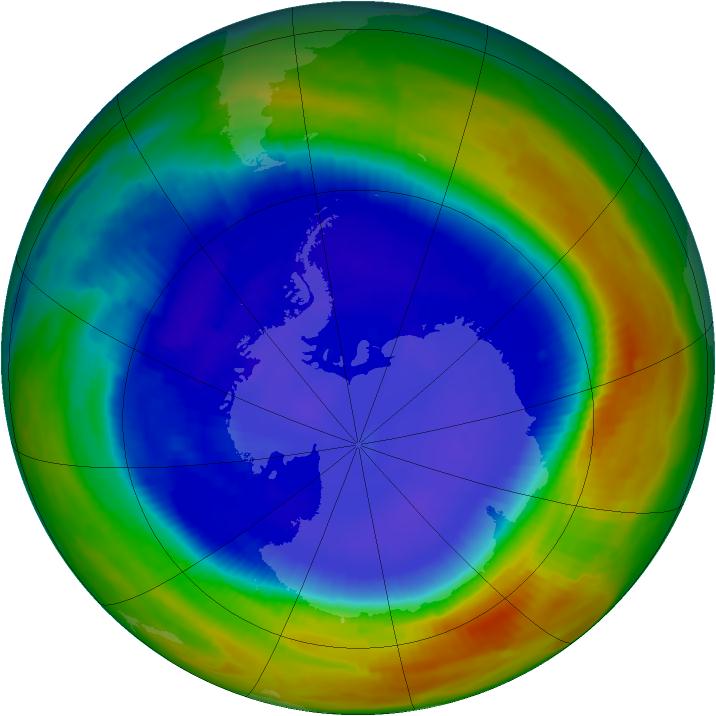

Ozone Hole Area
|
Minimum Ozone
|
|
(million km2) |
(DU) |
|
Maximum Daily |
Minimum Daily |
|
Year |
Date |
Value |
Date |
Value |
|
1996 |
7 September |
26.9 |
5 October |
103 |
http://ozonewatch.gsfc.nasa.gov
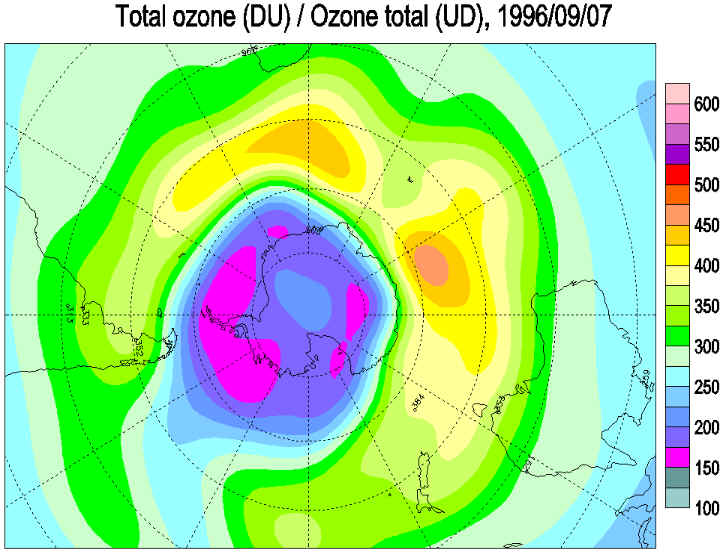
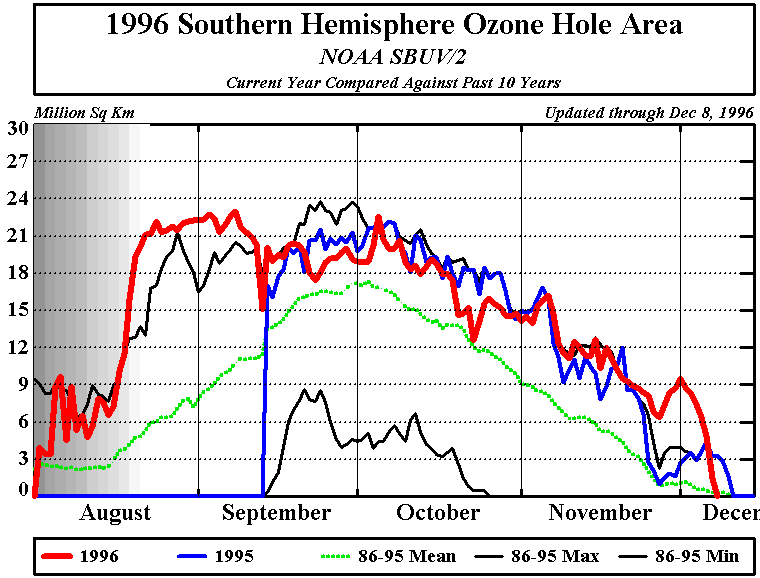
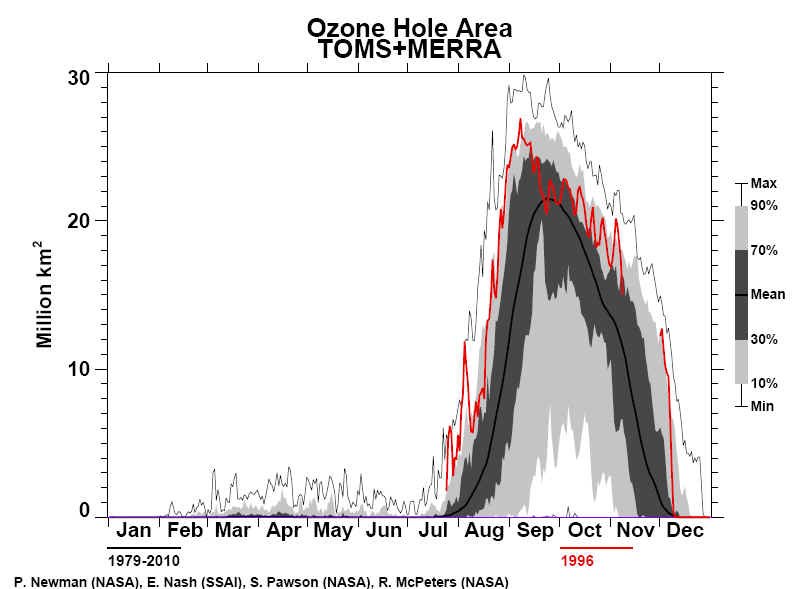
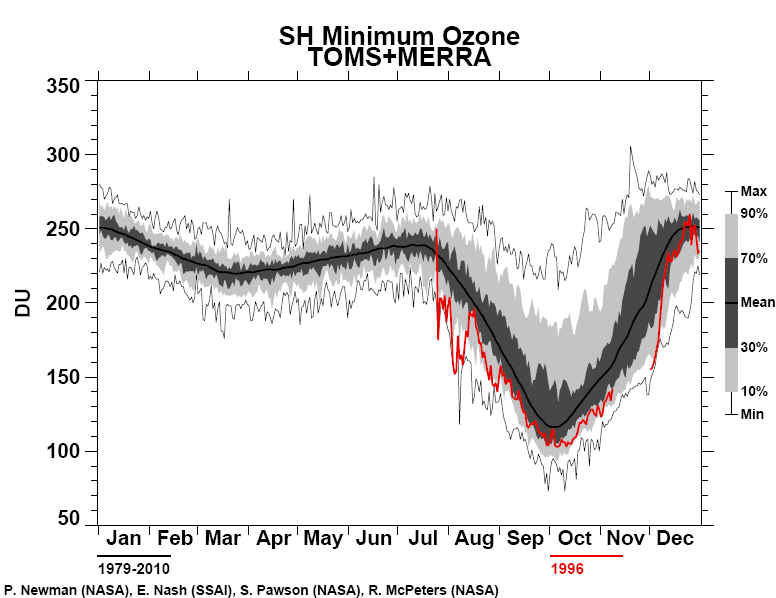
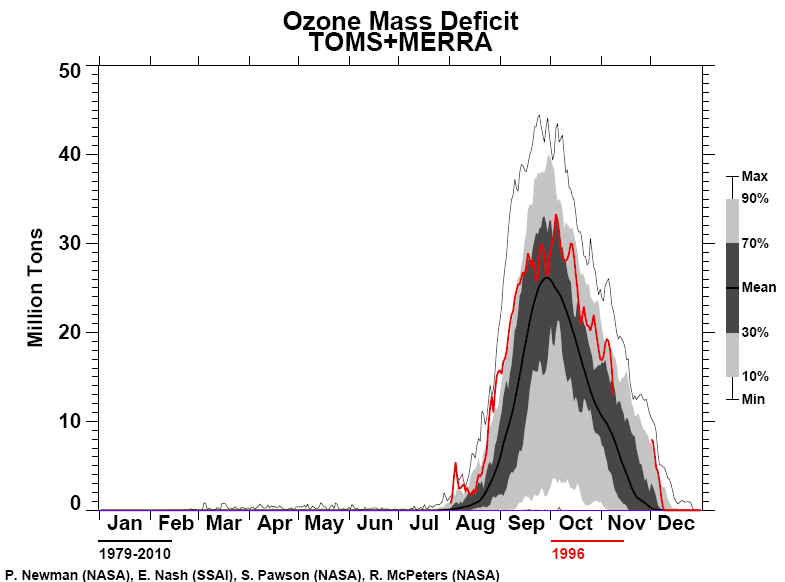
WMO Antarctic Ozone Summary for 1996
Meteorological conditions
Beginning in late August,
the minimum temperatures were generally somewhat lower than observed in the past
decade whereas the PSC area was as large as in 1995. Between August and October,
the polar vortex was one of the smallest in the past decade.
Ozone observations
Even though the vortex area was very small during much of the 1996 ozone hole
season, the monthly average ozone hole areas were unusually large. Moreover, the
duration of the ozone hole exceeded the ten previous years, beginning in late
August with an unusually rapid increase in size and finally ending well into
December. In early August a "mini hole" with ozone values up to 50% below
pre-ozone hole norms appeared over the Antarctic Peninsula. Then in early
October, ozone values of 45 to 60% below pre-ozone hole norms were observed over
most of Antarctica, however, the area with ozone values more than 50% below
norms was less than the previous two years. Through mid October the ozone hole
was somewhat circular before it changed to slightly elongated. Furthermore, in
late October the ozone hole stretched to 50° South latitude, which is a rare
event.
Conditions
over the populated regions
The "mini hole" was sufficiently large to have affected the southern tip of
South America with ozone values of 30% deviation from pre-ozone hole norms. This
was the first early observation of low ozone in this populated region since
1991. Later, Ushuaia measured ozone hole values on five days, twice in both mid
September and late November and once in mid October. However, New Zealand and
Australia in general did not observe low column ozone, although air 20% below
pre-ozone hole norms was observed on a single day over the southern coast of New
Zealand.
British Antarctic Survey summary 1996-Routine
ozone measurements from Halley station do not start until towards the end of
August because the sun is not high enough to permit measurements. Mean total
ozone values fell from an estimated 260 DU in early July to around 140 DU in mid
September and then declined more slowly to reach 125 DU in early October. They
climbed to around 180 DU by late October, but remained at that level throughout
November. In early December, ozone levels began to rise and reached a peak of
around 300 DU late in the month. This is some 80 DU lower than the pre-ozone
hole average peak value. After that, values slowly declined and had reached
around 230 DU by the end of the season. Values only briefly exceeded the lower
bound of the variation from the long-term mean late in the season. The lowest
mean daily value seen (114 DU on October 8) is comparable to that of the
previous few years.
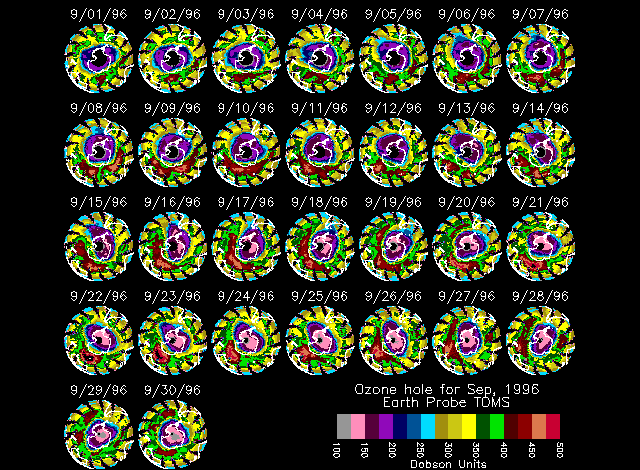
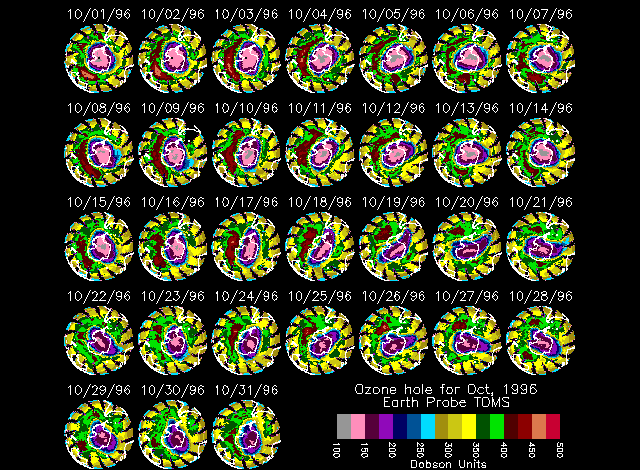
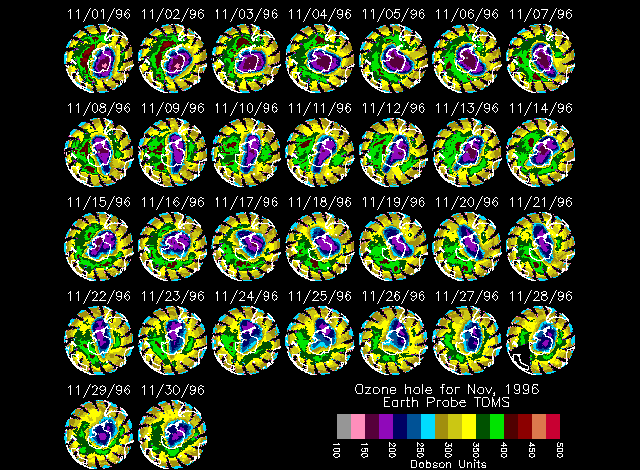
|












